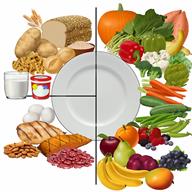Too Much Body Fat in Children (Obesity): What to Know
Being overweight is when your child has too much body fat. Obesity is having so much body fat that it can affect your child's health and lead to other health problems. Being obese means that the child's weight is greater than the weight of other children of the same age, gender, and height.
BMI (body mass index) is a number that explains how much body fat your child has. It's calculated from your child's height and weight. A BMI that is greater than 95 percent is obese.
Obesity can cause serious health problems, such as:
What are the causes?
-
Eating daily meals that are high in calories, sugar, and fat.
-
Drinking sugary beverages, like soft drinks.
-
Family history of weight problems.
- Having a medical problem that causes obesity, including:
-
Taking certain medicines, such as steroids, antidepressants, and seizure medicines.
-
Not getting enough exercise (sedentary lifestyle).
What increases the risk?
-
Being fed formula instead of breast milk as an infant.
-
Receiving exclusive breastfeeding for less than six months.
-
Living in an area with little access to parks, recreation centers, or sidewalks.
-
Living in an area with little access to healthy foods, such as grocery stores and farmers' markets.
What are the signs or symptoms?
The main sign of obesity is having too much body fat.
How is this diagnosed?
Too much body fat is diagnosed based on:
Your child may have other tests to check for other causes of obesity.
How is this treated?
Treatment for this condition may include:
Changing what your child eats. Your child may need to follow a healthy meal plan.
- Exercise. This may include activity that causes your child's heart to beat faster (aerobic exercise). Your child can also do strength training or play sports.
Behavioral therapy. This includes problem solving and stress management.
Treating medical problems that cause obesity.
Medicines. This may be done only for children 12 years and older.
Follow these instructions at home:
Eating and drinking

- Limit or avoid these foods:
Fast food, sweets, and processed snacks.
Sugary drinks, such as soda, fruit juice, sweetened iced tea, and flavored milks.
-
Give low-fat or fat-free options, such as low-fat milk instead of whole milk.
-
Offer your child at least 5 servings of fruits or vegetables every day.
-
Eat at home more often. This gives you more control over what your child eats.
-
Set a healthy eating example for your child. This includes choosing healthy options for yourself at home or when eating out.
-
Make healthy snacks available to your child, such as fresh fruit or low-fat yogurt.
-
Learn to read food labels.
-
Learn what a healthy serving size is. Serving sizes may be different depending on the age of your child.
-
Plan and cook healthy meals with your child.
-
Talk with the health care team if you have any questions about your child's meal plan.
Physical activity
-
Encourage your child to be active for at least 60 minutes every day of the week.
-
Make exercise fun. Find activities that your child enjoys.
-
Be active as a family. Take walks together or bike around the neighborhood.
-
Talk with your child's daycare or after-school program leader about increasing physical activity.
Lifestyle
-
Limit the time your child spends in front of screens to less than 2 hours a day. Avoid electronic devices in your child's bedroom.
-
Help your child get regular quality sleep. Ask your health care team how much sleep your child needs.
-
Help your child find healthy ways to manage stress.
General instructions
-
Give medicines as told.
-
Have your child keep a journal to track food and exercise.
-
Consider joining a support group with other families with obese children who are trying to make healthy changes.
-
Do not call your child names based on weight or tease your child about weight. Discourage other family members and friends from mentioning your child's weight.
-
Pay attention to your child's mental health as obesity can lead to depression or problems with self-esteem.
Contact a health care provider if:
-
Your child has trouble with mood, how to act in certain situations, or how to interact with others.
-
Your child has trouble sleeping.
-
Your child has joint pain.
-
Your child's breathing requires more effort than normal.
-
Your child has made the recommended changes but is not losing weight.
-
Your child avoids eating with you, family, or friends.
This information is not intended to replace advice given to you by your health care provider. Make sure you discuss any questions you have with your health care provider.
